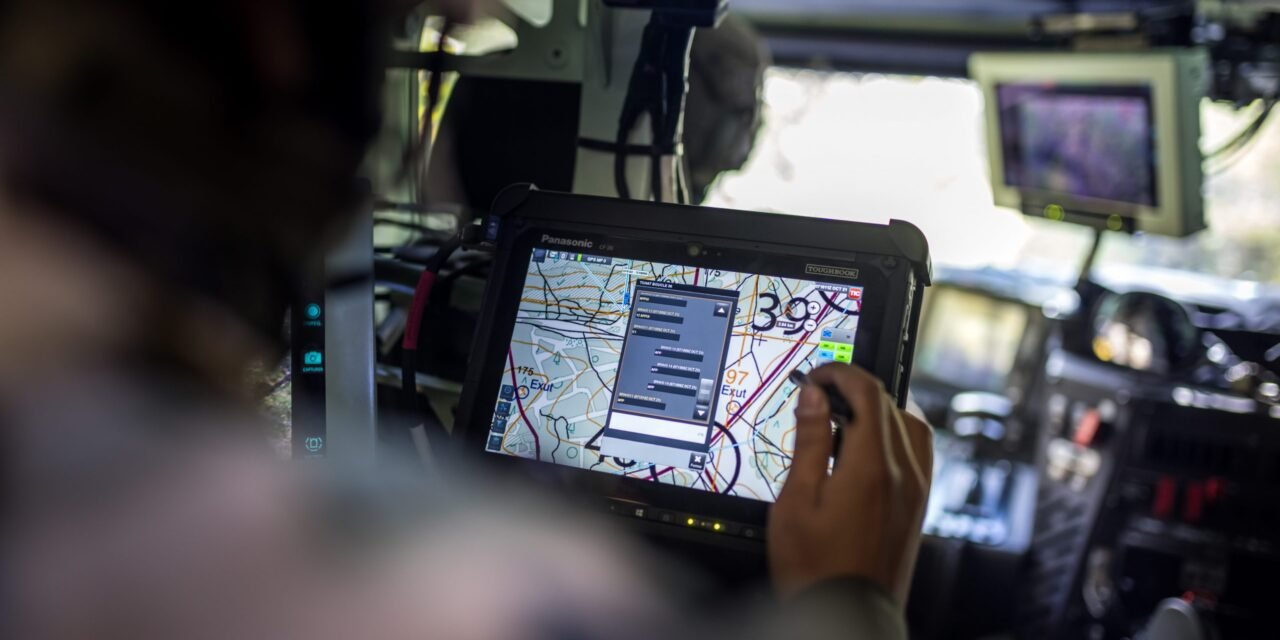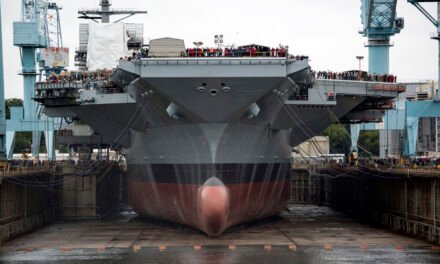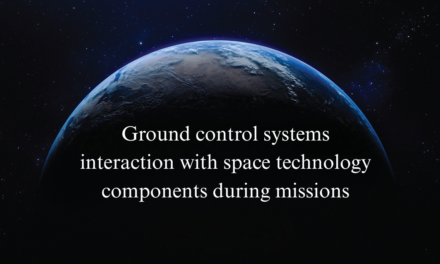Integrated Battlefield Management Systems (IBMS) improve coordination among defense units by providing a unified platform for real-time communication, data sharing, and decision-making across multiple domains of operation. These systems enhance situational awareness, operational efficiency, and force synchronization, enabling effective coordination in complex and dynamic battlefields.
1. Key Features of Integrated Battlefield Management Systems
a. Real-Time Situational Awareness
- Centralized Data Integration:
- Collects data from multiple sensors (radars, drones, satellites) and units (ground forces, naval fleets, and air assets) to create a comprehensive operational picture.
- Example: Blue Force Tracking systems show the positions of friendly units in real time.
- Multi-Domain Integration:
- Combines land, air, sea, and space data into a single interface, enabling commanders to assess threats and opportunities across domains.
b. Communication and Interoperability
- Secure and Reliable Communication:
- Ensures secure and encrypted communication between units to prevent interception and jamming.
- Interoperability:
- Connects diverse systems and units from different services (army, navy, air force) and allied forces to ensure seamless collaboration.
- Example: NATO’s Link 16 data link system for real-time information sharing.
c. Decision Support and Automation
- Artificial Intelligence (AI) Integration:
- Analyzes data to identify threats, predict enemy movements, and suggest optimal courses of action.
- Automated Responses:
- Triggers pre-programmed actions like deploying interceptors or scrambling aircraft in response to detected threats.
d. Command and Control (C2)
- Hierarchical Coordination:
- Streamlines communication between tactical, operational, and strategic levels of command.
- Task Assignment:
- Automates the distribution of tasks among units, ensuring efficient resource utilization.
2. How IBMS Improves Coordination Among Defense Units
a. Enhanced Collaboration
- Unified Operational Picture:
- Provides all units with a shared view of the battlefield, ensuring that commanders and personnel operate with consistent information.
- Joint Mission Execution:
- Enables synchronized operations between units from different services (e.g., air support for ground assaults).
b. Rapid Decision-Making
- Reduced Response Times:
- Real-time data updates allow commanders to make informed decisions faster.
- AI-Assisted Insights:
- AI-driven analytics provide actionable intelligence, such as predicting enemy maneuvers or identifying high-value targets.
c. Force Synchronization
- Coordinated Movements:
- Synchronizes the movements of land, air, and sea units to execute complex operations like amphibious assaults or combined arms maneuvers.
- Precision Targeting:
- Shares targeting data among units, enabling joint strikes and reducing the risk of friendly fire.
d. Resource Optimization
- Efficient Asset Allocation:
- Identifies gaps in coverage and reallocates assets like drones, aircraft, or artillery to address operational needs.
- Logistical Coordination:
- Ensures timely delivery of supplies, reinforcements, and medical aid through integrated supply chain management.
3. Applications of IBMS
a. Tactical Operations
- Supports platoon- and company-level operations with real-time intelligence, enabling rapid responses to evolving threats.
- Example: Ground forces receive drone surveillance data to identify enemy positions.
b. Strategic Planning
- Assists higher command levels in analyzing battlefield trends, evaluating enemy strategies, and planning long-term operations.
- Example: A naval fleet coordinating with air assets to establish air superiority before launching an amphibious landing.
c. Multi-Domain Operations
- Facilitates operations across land, air, sea, space, and cyber domains by integrating assets and providing unified command structures.
- Example: Space-based satellites providing intelligence to ground and air units.
4. Technology Driving IBMS
a. Artificial Intelligence (AI) and Machine Learning
- AI algorithms process vast amounts of data to detect patterns, classify threats, and optimize resource allocation.
b. Internet of Things (IoT)
- Connects battlefield sensors, vehicles, and personnel to IBMS, ensuring continuous data flow.
c. Big Data Analytics
- Processes large volumes of battlefield data to extract actionable insights.
d. Cloud Computing
- Enables decentralized data access, allowing units in remote locations to retrieve and share information in real time.
e. Cybersecurity
- Protects IBMS networks against cyber threats, ensuring the integrity and availability of critical information.
5. Advantages of IBMS
a. Increased Situational Awareness
- Units and commanders gain a real-time understanding of the battlefield, reducing the fog of war.
b. Enhanced Precision
- Accurate data sharing and targeting minimize collateral damage and maximize mission success.
c. Flexibility and Adaptability
- Adapts to changing battlefield conditions, ensuring that forces remain agile and responsive.
d. Interoperability
- Facilitates joint operations among allied forces, enhancing coalition effectiveness.
6. Challenges and Solutions
a. Data Overload
- Challenge:
- Managing vast amounts of data from multiple sources.
- Solution:
- Use AI-driven analytics to filter and prioritize relevant information.
b. Network Vulnerability
- Challenge:
- Susceptibility to jamming, hacking, or physical disruption.
- Solution:
- Implement robust cybersecurity measures, encryption, and redundant communication channels.
c. Compatibility Issues
- Challenge:
- Integrating legacy systems with modern IBMS platforms.
- Solution:
- Develop modular and scalable systems for backward compatibility.
7. Examples of IBMS Implementations
a. US Army’s Integrated Battle Command System (IBCS)
- Provides real-time data integration for air and missile defense units.
b. NATO’s Allied Ground Surveillance (AGS)
- A multinational system integrating data from drones, radars, and satellites.
c. Israel’s C4I Systems
- Seamlessly integrates sensors, units, and command centers for coordinated defense.
8. Strategic Importance
- Enhanced Decision-Making: Accelerates operational tempo by reducing delays in communication and coordination.
- Force Multiplication: Optimizes the use of limited resources, enabling smaller forces to achieve greater impact.
- Improved Joint Operations: Ensures interoperability among allied and coalition forces during multinational missions.
Conclusion
Integrated Battlefield Management Systems revolutionize military operations by fostering real-time coordination, enhancing situational awareness, and enabling synchronized actions across multiple domains. As threats become more complex, IBMS will continue to evolve, incorporating advanced technologies like AI, IoT, and cloud computing to maintain battlefield superiority and operational effectiveness.
Hashtags
#BattlefieldManagement #IntegratedDefenseSystems #ModernWarfareTech #DefenseCoordination #SmartBattlefield #CommandAndControl #C2Systems #RealTimeCommand #TacticalManagement #C2Integration #ImprovedCoordination #DefenseUnitCoordination #InterUnitConnectivity #SeamlessCoordination #MissionCoordinationTech #CollaborativeDefense













